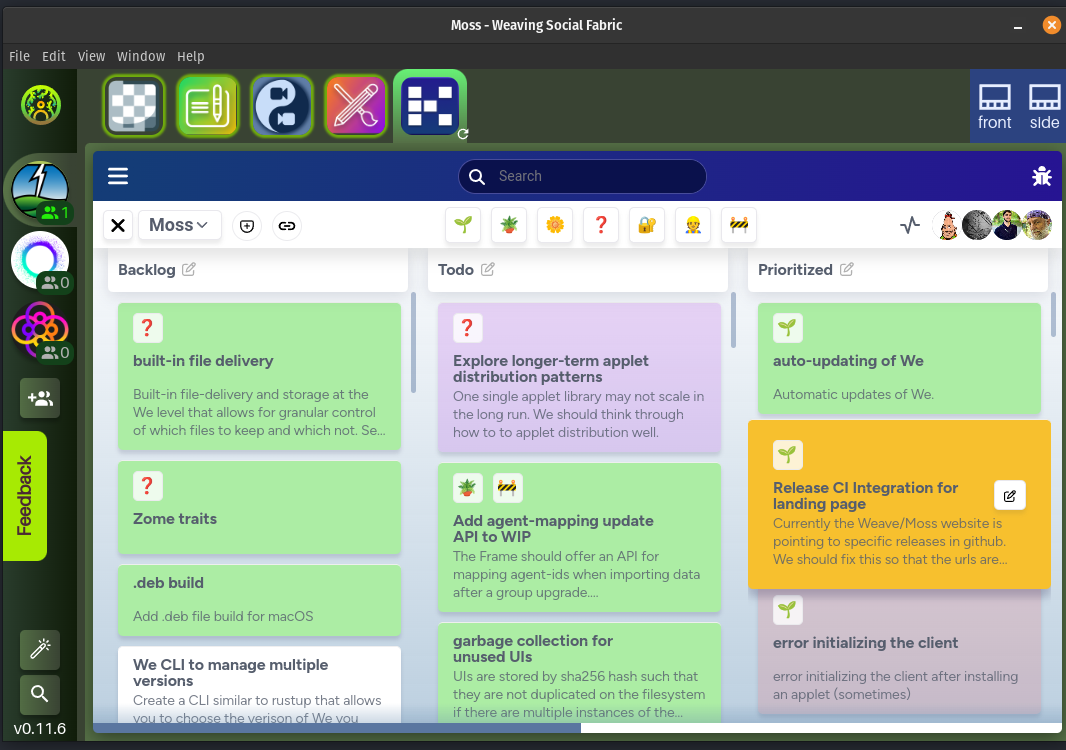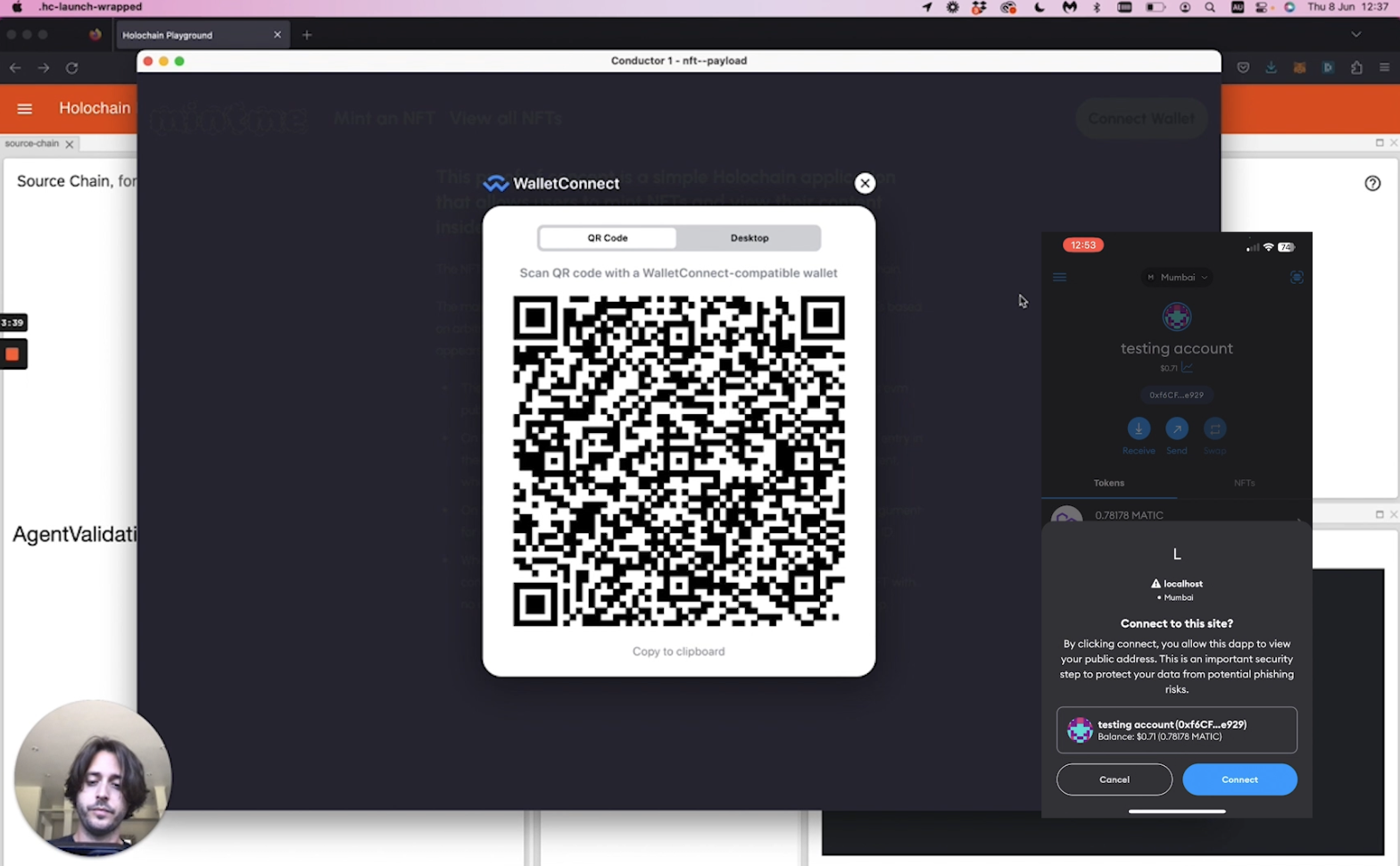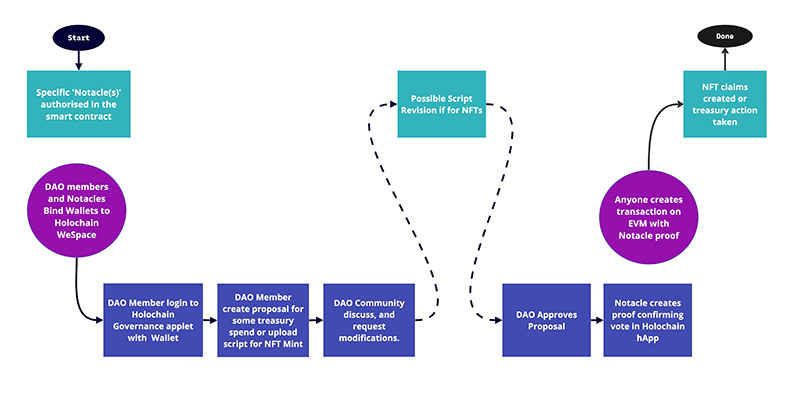The Weave defines an interaction pattern for Holochain hApps to be added as "Tools" into group spaces. Moss is a reference implementation of the Weave pattern that includes a host of tools like chat, video-conferencing, KanBan boards, governance tools, games, collaborative editing and more.
Moss is an ideal platform for experimenting with Progressive Decentralization, where DAOs can start using decentralized tools for team conversations, project management and governance. Because groups can easily choose just the tools they want for their group, and because tools are interoperable, The Weave and Moss allow a progressive adoption and integration path as groups continuously add more components to their distributed Holochain-based group space, while continuing to use legacy platforms as needed.
'How' is a governance prototype and protocol with workflows for proposals and supports meta governance for groups and communities to maximize collective alignment. Add it as a tool to Moss and customize it to your community needs.
Repo: https://github.com/holochain-apps/how





